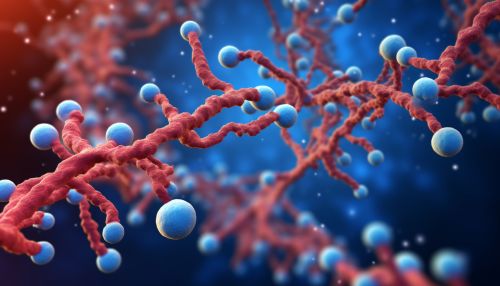Protein kinase G
Overview
Protein kinase G (PKG) is a serine/threonine-specific protein kinase that is activated by cGMP. It belongs to a family of enzymes that mediate cellular response to various stimuli, such as changes in the concentration of certain ions, hormones, and other signaling molecules. PKG is involved in numerous cellular processes, including regulation of ion channels, differentiation, proliferation, and apoptosis.


Structure
PKG exists in two major forms, PKG I and PKG II. PKG I has two isoforms, PKG Iα and PKG Iβ, which are encoded by the PRKG1 gene. PKG II is encoded by the PRKG2 gene. All PKG isoforms share a common structure, consisting of a regulatory and a catalytic domain. The regulatory domain contains binding sites for cGMP, while the catalytic domain is responsible for the enzyme's kinase activity.
Function
PKG is a key mediator in the nitric oxide/cGMP signaling pathway. It is activated by cGMP, which is synthesized by guanylyl cyclase in response to nitric oxide. Once activated, PKG can phosphorylate a variety of target proteins, leading to changes in their activity. This allows PKG to regulate a wide range of cellular processes.
Role in Disease
Abnormal PKG activity has been implicated in several diseases. For example, decreased PKG activity has been observed in hypertension and heart failure, suggesting a role for PKG in cardiovascular function. Additionally, mutations in the PRKG1 gene have been associated with thoracic aortic aneurysms and dissections.
Therapeutic Potential
Given its role in disease, PKG is considered a potential therapeutic target. Several drugs that modulate PKG activity are currently under investigation for the treatment of various conditions, including cardiovascular diseases and cancer.
